Computer Vision vs Machine Learning: Let's Figure This Out
Why are Computer Vision vs Machine Learning often confused? Working with artificial intelligence (AI) means facing these terms more often than you would assume. Still, laypeople and even professionals struggle to tell the difference straightaway. And we totally get it! But how about dotting all the i's and crossing the t's today? Below, we have gathered the all-in guide to understanding the difference between Computer Vision vs Machine Learning in simple terms. Find the answers to all the most frequently asked questions about Machine Vision vs Computer Vision, Deep Learning algorithms, and the role of machine vision in the automotive industry. Be the one who brings clarity to the table when the conversation about AI has just hit a dead end :)
Go right below to reveal the pitfalls of such topics as:
- Machine Learning is not a new branch of artificial intelligence. In fact, it was first mentioned by Alan Turing in 1950.
- What is Computer Vision? Computer Vision is a field of AI that utilizes Deep Learning algorithms to enable computers to process visual data, like photos, videos, pictures, etc.
- How are Computer Vision vs Machine Learning related? While Machine Learning is a broader AI field, Computer Vision uses ML algorithms to process the visual data in a more advanced and precise way. Machine learning (ML) works by enabling computers or machines to learn from data, identify patterns, and make decisions with minimal or even zero human intervention.
- One of the prominent examples of Machine Learning and Computer Vision use is a custom-built dynamic pricing & capacity management platform, aimed to combine top-notch driver experience, predictive vehicle maintenance, car condition monitoring, and Agentic AI time slots booking.
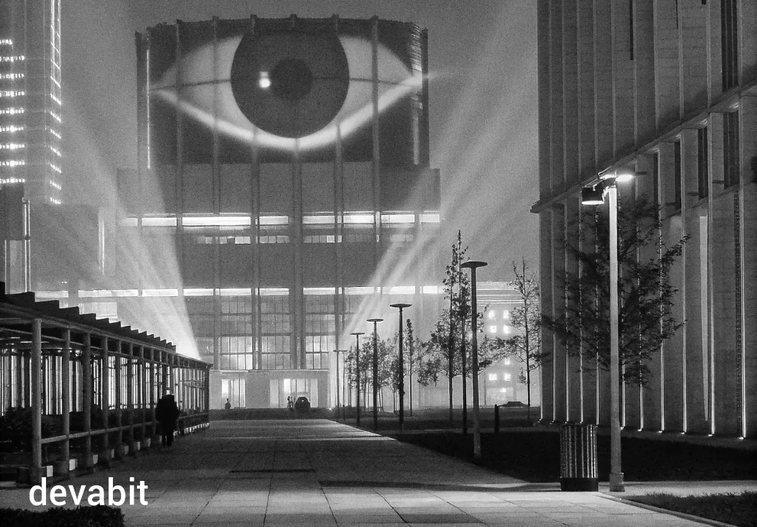
- Setting the Basis: AI Role
- What AI Algorithms Does Computer Vision Use?
- What AI Algorithms Does Machine Learning Use?
- What Is Machine Learning?
- How Does Machine Learning Work?
- What Is Computer Vision?
- How Does Computer Vision Work?
- Is Computer Vision the Same as Machine Learning, or Are They Different Fields?
- Which One is a Broader Concept, Computer Vision vs Machine Learning?
- What Data Can Computer Vision vs Machine Learning Process and Learn from?
- Does Computer Vision Always Require Machine Learning?
- What Are the Examples of Computer Vision vs Machine Learning?
- What Is the Difference Between Computer Vision and Machine Vision in Industry?
- What Are the Most Popular Deep Learning Algorithms Used in Computer Vision?
- Computer Vision vs Machine Learning: Final Thoughts
Setting the Basis: AI Role
Understanding the peculiarities of Computer Vision vs Machine Learning begins with mastering the basics. That is why we would like to start with the urgent role of artificial intelligence in comprehending the gap between Computer Vision vs Machine Learning.
First and foremost, Computer Vision and Machine Learning are both parts of the AI ecosystem. They are two separate artificial intelligence fields, aimed at working with machines in this or that way. Which leads us to the conclusion that Computer Vision and Machine Learning algorithms overlap. But in which way? We are here to find this out!
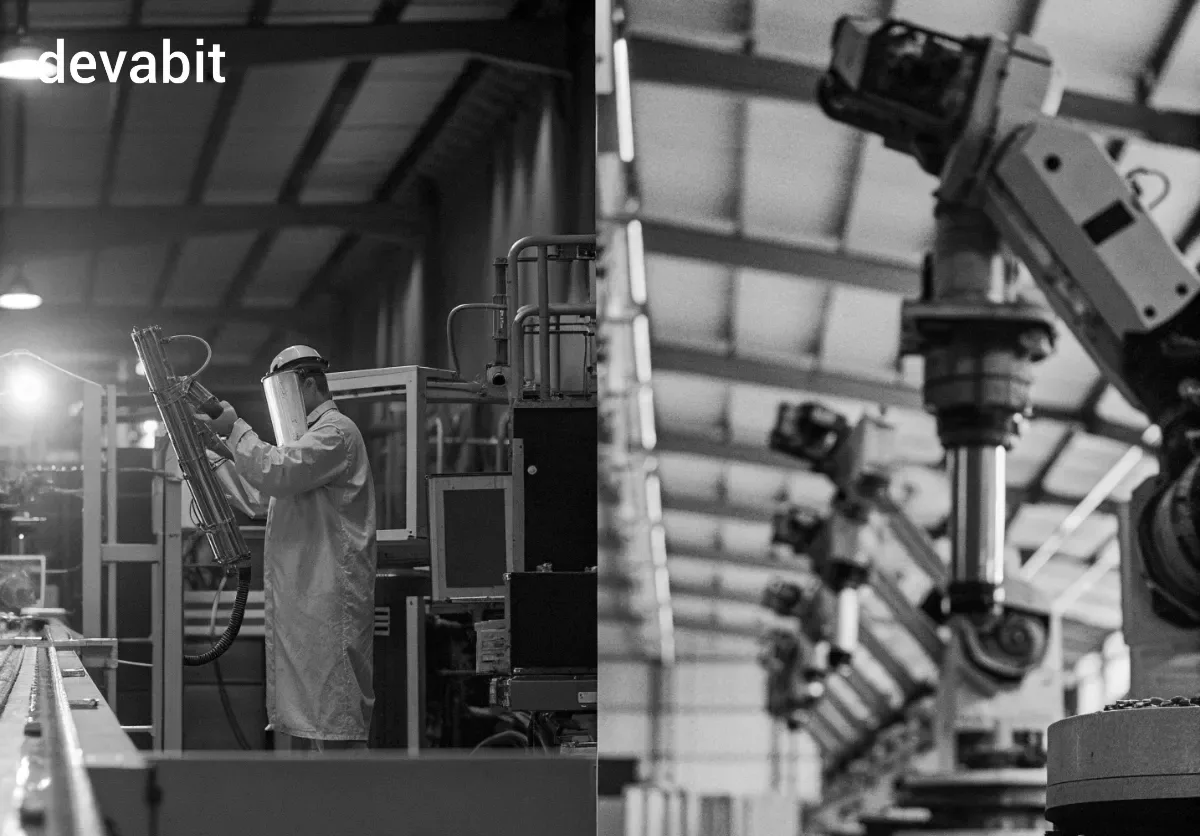
Getting back to the artificial intelligence impact, we must understand what AI algorithms, Computer Vision vs Machine Learning, use to process information and produce data-driven outcomes. Let's crack it real quick.
What AI Algorithms Does Computer Vision Use?
Computer Vision problems, like object recognition, face detection, or segmentation, are usually tackled with ML-based algorithms. Some key ones include:
- k-Nearest Neighbors (kNN): for simple image classification based on feature similarity.
- Support Vector Machines (SVM): effective for binary image classification (faces vs non-faces).
- Decision Trees & Random Forests: used for feature-based classification.
- Clustering (K-means, DBSCAN): grouping image patches, colors, or features.
What AI Algorithms Does Machine Learning Use?
If we put Computer Vision vs Machine Learning, we must admit that ML is a much broader concept, which operates numerous and the most diverse and multi-purpose AI algorithms, built for different fields of use. However, there are a few key algorithms that Machine Learning is usually based on:
- Supervised Learning: referring to Decision Trees or Random forests, these models work with labeled data with inputs.
- Unsupervised Learning: built for identifying structures or patterns within unlabeled data.
- Semi-Supervised Learning: practical for processing little-labeled data or lots of unlabeled data.
- Reinforcement Learning: simply put, data processing via the error and trial method.
- Deep Learning: a multi-layer network used for a broad range of purposes, is capable of processing extensive and scalable data.
The potential of Machine Learning is not limited to five algorithm types. Furthermore, ML stands at the forefront of AI implementation in numerous industries, from HealthCare and E-Learning to Automotive and Fintech. You see it any day and anytime, but probably never even dived that deep into it. From Google's search engines and Siri on your newest iPhone 17, in a trendy color, to predictive analytics on your doctor's screen and driverless taxis' interiors.
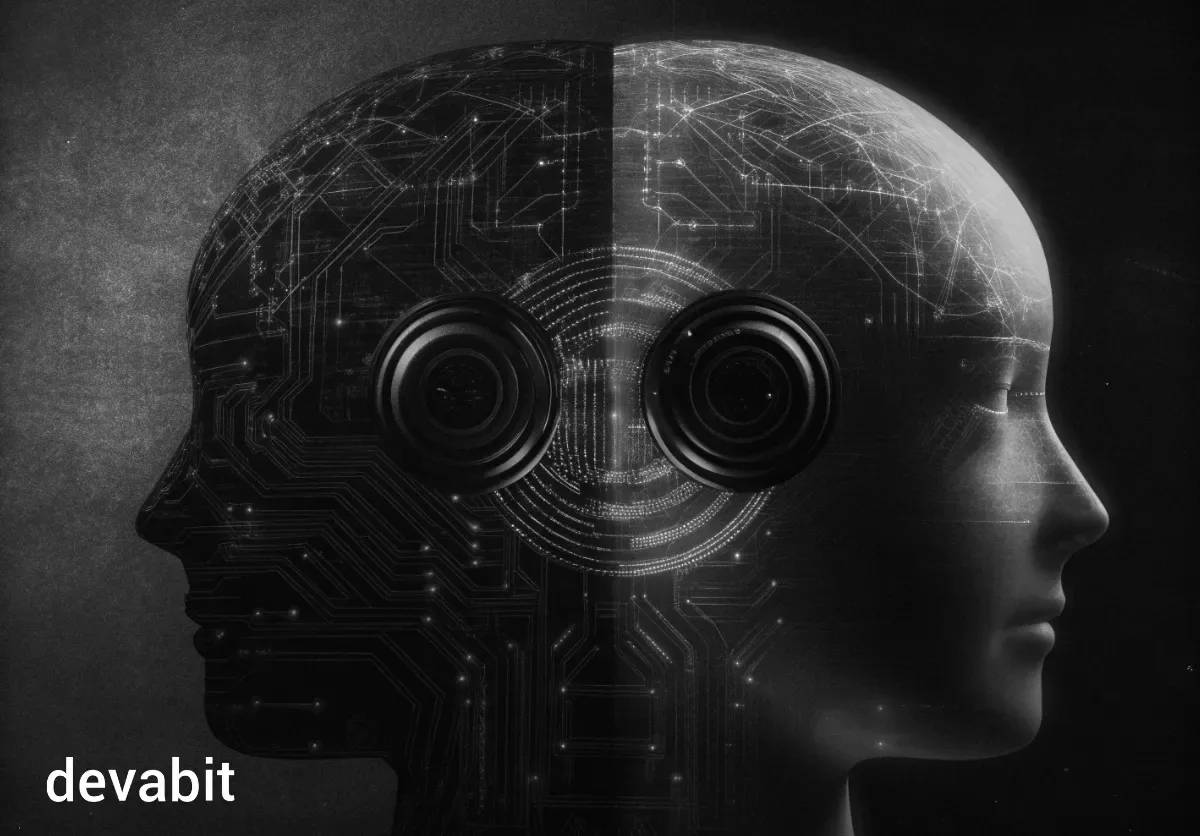
In order to investigate the whole Mariana Trench of ML profit, you definitely need to spend a day or two. But, luckily for you, devabit has gathered a 101 guide to Machine Learning in Cloud Computing and answered the most frequently asked questions you seek in the simplest words by our top-tier software developer, Taras Hrybyk:
- What is Machine Learning in Cloud Computing, and how does it work?
- Is Machine Learning a part of cloud computing?
- Can small or medium-sized businesses afford Machine Learning?
- What cloud providers should you choose for ML integration?
- What are the most common Machine Learning in Cloud Computing use cases?
- How to implement Machine Learning in Cloud Computing for a custom-built solution?
If you came here for the top insights, do not miss the chance to have a look at Machine Learning from the perspective of real pros.
To comprehend the whole piece, we will start by breaking the topic into a few clusters, like what Machine Learning is or how Computer Vision works. Moving straight ahead!
What Is Machine Learning?
Machine Learning (ML) is a field of artificial intelligence that focuses on creating systems able to learn from data and improve performance without being explicitly programmed.
Instead of following step-by-step instructions, ML algorithms identify patterns, make predictions, and adapt when new data arrives.
Even though it may seem like Machine Learning is a relatively fresh concept in the world of technology, let us prove you wrong. The history of Machine Learning dates back to the 1950s (!) when Alan Turing first introduced the idea of machine intelligence in his famous paper "Computing Machinery and Intelligence". And while the whole world witnessed the first iPhone release only in 2007, Machine Learning was taking its time to transform from a mere concept into a powerful business and tech tool in 2025.
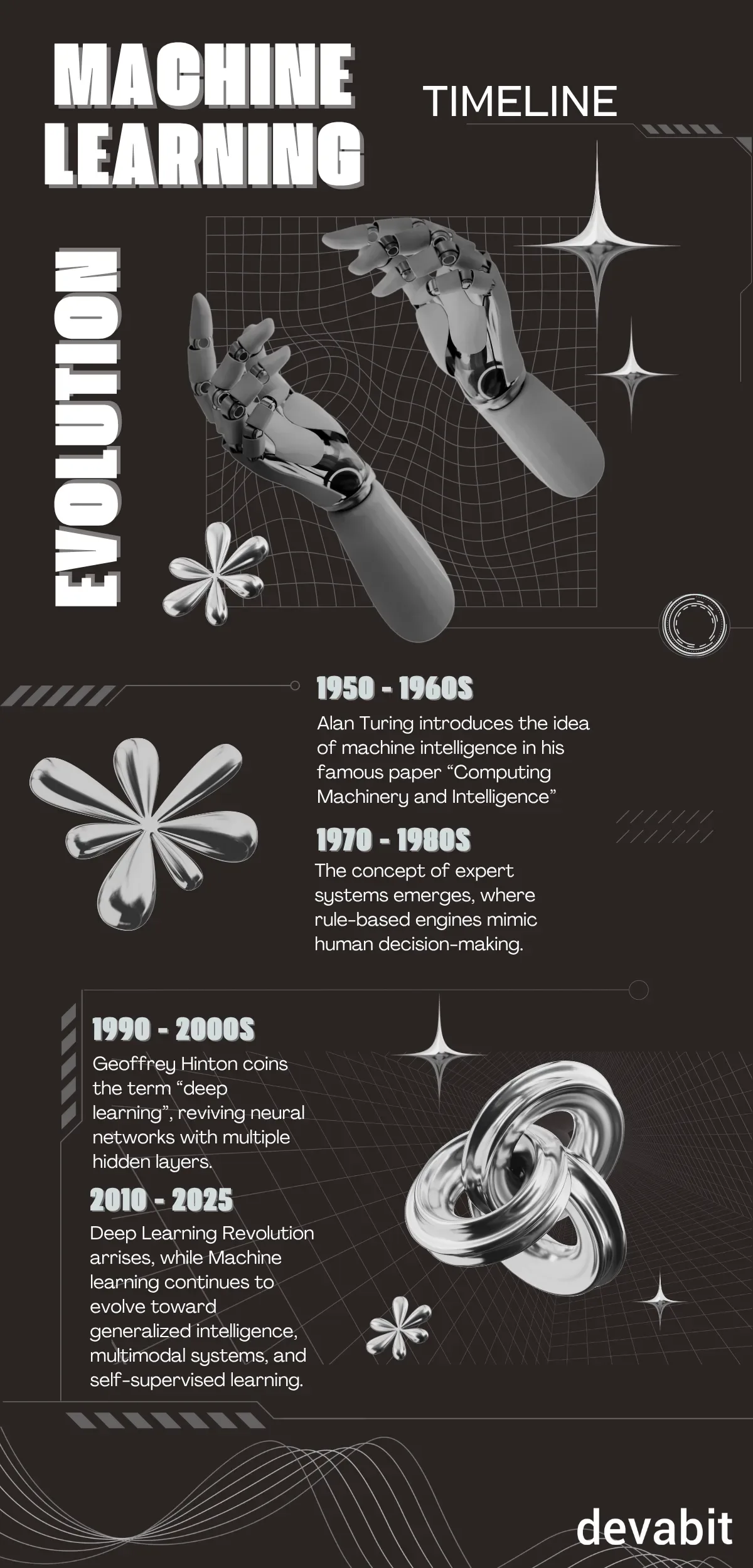
How Does Machine Learning Work?
Machine learning (ML) works by enabling computers or machines to learn from data, identify patterns, and make decisions with minimal or even zero human intervention. Instead of being explicitly programmed to perform a task, a machine learning model is trained on examples and improves automatically as it processes more data. Here is a step-by-step algorithm of how Machine Learning works:
- Data Collection: Every Machine Learning project starts with data: numbers, images, text, or user behavior. The more accurate and diverse the data, the better the system learns.
- Data Preparation: During this step, raw data is cleaned and organized. The process includes removing errors, filling in missing values, and formatting data so algorithms can understand it.
- Choosing a Model or Algorithm: At this point, the algorithm defines how the machine learns. A few common examples include:
- Linear regression for predicting values (like prices or sales).
- Decision trees for classification tasks.
- Neural networks for complex data like images or speech.
- Training the Model: Now, the chosen algorithm is trained on a dataset. The model analyzes input–output pairs and adjusts its internal parameters to minimize prediction errors.
- Testing and Evaluation: Once trained, the model is tested on new data it has not seen before. This procedure checks how well it generalizes and ensures it is not just memorizing examples.
- Prediction and Optimization: After successful testing, the ML model can make real-world predictions, such as detecting fraud, recommending products, or recognizing faces. Moreover, it can be retrained again with newer datasets over time.
What Is Computer Vision?
Computer Vision is a field of artificial intelligence (AI) that enables computers and machines to see, understand, and interpret visual information from the world, just like humans do. Using digital images, videos, and deep learning models, Computer Vision allows systems to recognize objects, detect patterns, and make decisions based on what they “see.”
Computer vision helps businesses and industries automate visual tasks, improve accuracy, and gain insights from visual data that was once only possible for humans. It is one of the fastest-growing areas of AI, driving innovation in such industries as healthcare, robotics, retail, and automotive.
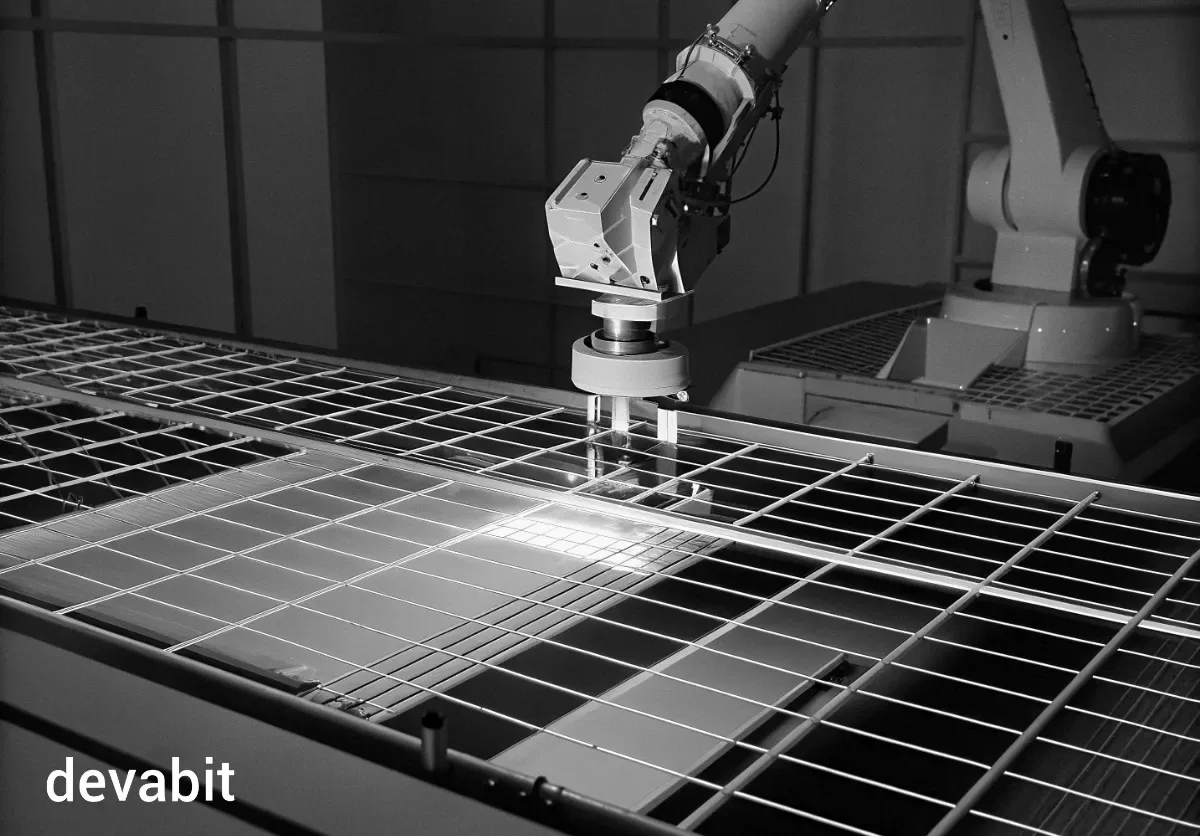
In simple terms, Computer Vision stands as the eyes of modern machines, enabling them to process visual data with maximum accuracy and precision. The technology automates the endless list of tasks that used to be impossible to complete without thorough human intervention.
How Does Computer Vision Work?
Let's now take a look at a basic algorithm of how exactly Computer Vision works, and if it really differs from Machine Learning.
Input Image/Video
The Computer Vision system receives data from a camera, photo, video stream, or even medical scans for further processing.
Preprocessing
The raw image is cleaned or adjusted to improve quality and reduce noise. This procedure may include resizing, removing blur, adjusting contrast, or converting to grayscale. Anything to help the system process the data properly.
Feature Extraction
The system identifies important visual patterns, like edges, shapes, colors, or textures. In modern Computer Vision systems, this step is often automated by deep learning algorithms.
Model Inference
The extracted features are passed through an AI model trained on large datasets. The model compares what it sees with its “knowledge” of millions of labeled examples. For example, a Computer Vision model trained on vehicles can recognize headlights, wheels, and overall structure to decide “this is a car.”
The Output
Finally, the system produces results via several categories, such as:
- Classification: “This is a truck.”
- Detection: “There are two people in the frame, one on the left, one on the right.”
- Segmentation: “These pixels belong to a car, these to a road.”
- Action: Triggering a response, like stopping a self-driving car if a pedestrian is detected.
Is Computer Vision the Same as Machine Learning, or Are They Different Fields?
Now, when we are more than familiar with the concepts of Computer Vision vs Machine Learning, let's move straight to the core of our discussion. What is the actual difference between Computer Vision vs Machine Learning? We will cover it in a few comparison points right below:
Which One Is a Broader Concept, Computer Vision vs Machine Learning?
Machine Learning is a much broader field of artificial intelligence, which is not limited to processing visual data, unlike Computer Vision. However, Computer Vision utilizes Machine Learning algorithms for training computers and machines to recognize any type of visual data.

What Data Can Computer Vision vs Machine Learning Process and Learn from?
Machine Learning models can be trained with any type of data, like photos, videos, numbers, statistics, audio, text, etc. Meanwhile, Computer Vision can process only visual info.
Does Computer Vision Always Require Machine Learning?
In short, no, Computer Vision does not always require Machine Learning, but modern Computer Vision systems almost always use it because ML, especially deep learning, makes it far more accurate and flexible.
Before Machine Learning became a thing, Computer Vision systems relied on rule-based algorithms, crafted by engineers. These systems did not “learn” from data. Instead, they followed mathematical formulas and logic written by humans. However, such models often struggled with accuracy and required a lot of human intervention, especially when it comes to handling complex data.
On the other hand, most modern Computer Vision systems are trained with the help of Machine Learning or Deep Learning algorithms, meaning that these systems can actually learn from data, evolve over time, and easily handle data-rich inputs.
What Are the Examples of Computer Vision vs Machine Learning?
It is hard to imagine our modern data-driven world without Machine Learning and Computer Vision algorithms, empowering numerous industries, from predicting disease risk in Healthcare and Augmented Reality (AR) integrations in E-Learning to CCTV object detection in E-Commerce. But let's now talk about the unique example of Machine Learning and Computer Vision, breathing life into a powerful client-centric solution of the Automotive Industry.
Our dynamic pricing and capacity management platform, in a symbiosis with the innovative DMS system and Predictive Maintenance technology, combines the power of Machine Learning and Computer Vision to deliver top-notch vehicle maintenance services to drivers all over the US.

While the developers involved the Computer Vision for training a data-driven platform that uses the AI algorithms for monitoring your vehicle's even the slightest changes and ensuring the unmistakable predictive maintenance. At the same time, the platform is already picking the nearest perfect-fit time slot for a vehicle maintenance session, while also offering numerous discounts and hot deals, so that the drivers, using our solution, never have to worry about the car's condition, available mechanics, or busy peak hours.
What Is the Difference Between Computer Vision and Machine Vision in Industry?
Computer Vision and Machine Vision are related but not the same thing, especially in industrial applications. And let's delve into why:
Computer Vision refers to the software intelligence, algorithms that analyze and interpret images or video. Its goal is to help a computer “see” and understand visual information. In industry, Computer Vision is used for tasks like defect detection, object recognition, barcode reading, or product counting.
Machine Vision, on the other hand, is a complete hardware and software system used for automated visual inspection and control. It includes cameras, lenses, lighting, sensors, processors, and computer vision software working together. Machine vision does not just analyze images, but also captures them and triggers physical actions, like sorting defective items on a production line or guiding a robot’s movements.
In a nutshell, Computer Vision can only see and process information, while Machine Vision is also able to make informed decisions and take actions on its own.
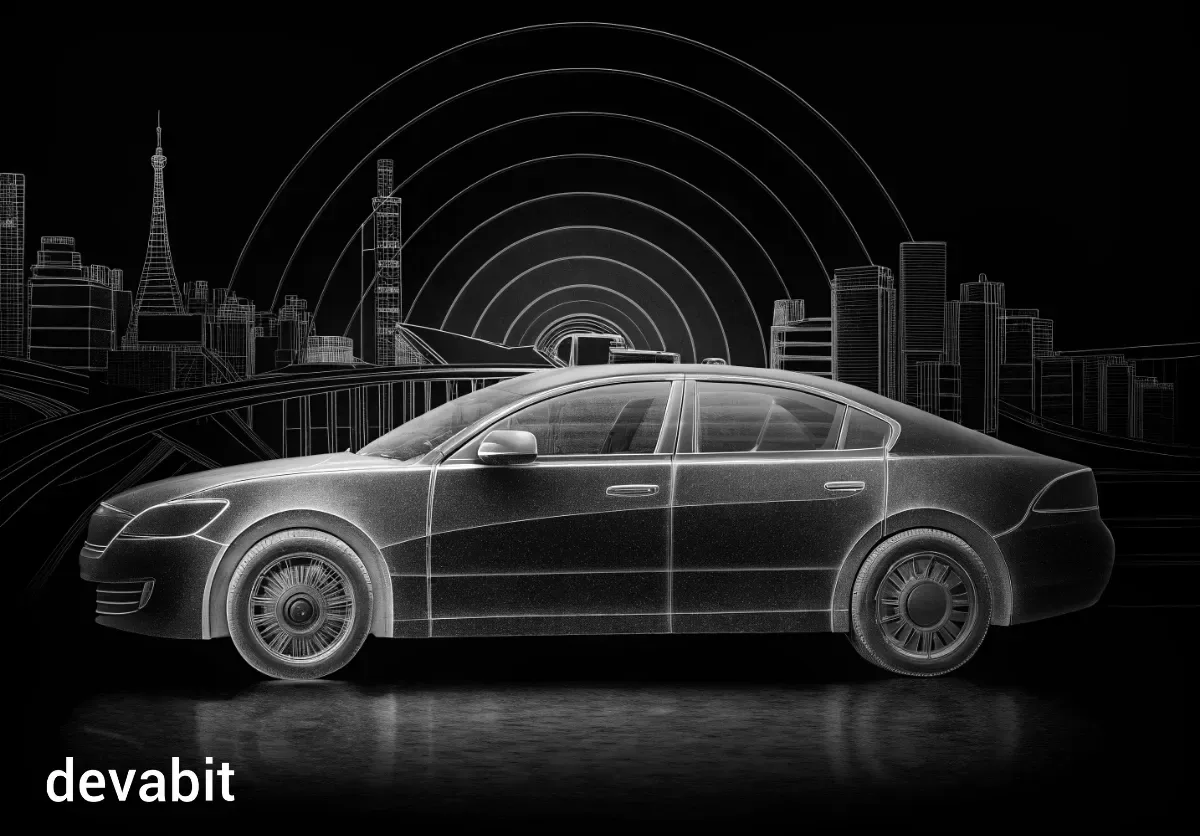
What Are the Most Popular Deep Learning Algorithms Used in Computer Vision?
Today, we can outline five key Computer Vision Deep Learning algorithms, used for processing visual data, which include:
01 / Convolutional Neural Networks (CNNs)
The true basis of modern Computer Vision technology used for image classification, object recognition, and feature extraction. CNNs are designed to automatically extract spatial features, like edges, textures, or shapes, from images using convolutional layers. And popular CNN architectures include: LeNet-5, AlexNet, VGGNet, and Inception.
02 / Region-Based Convolutional Neural Networks
These Computer Vision Deep Learning algorithms extend CNNs to locate where objects are in an image, not just what they are. They combine region proposal methods with CNN feature extraction to conduct object detection, instance segmentation, and object localization. Central architectures are R-CNN, Fast R-CNN, Faster R-CNN, and Mask R-CNN.
03 / YOLO (You Only Look Once)
Real-time object detection, Computer Vision Deep Learning algorithms that predict bounding boxes and class probabilities in one pass through the network. Usually used for real-time applications like autonomous driving, surveillance, and robotics. Versions are YOLOv1 - YOLOv9.
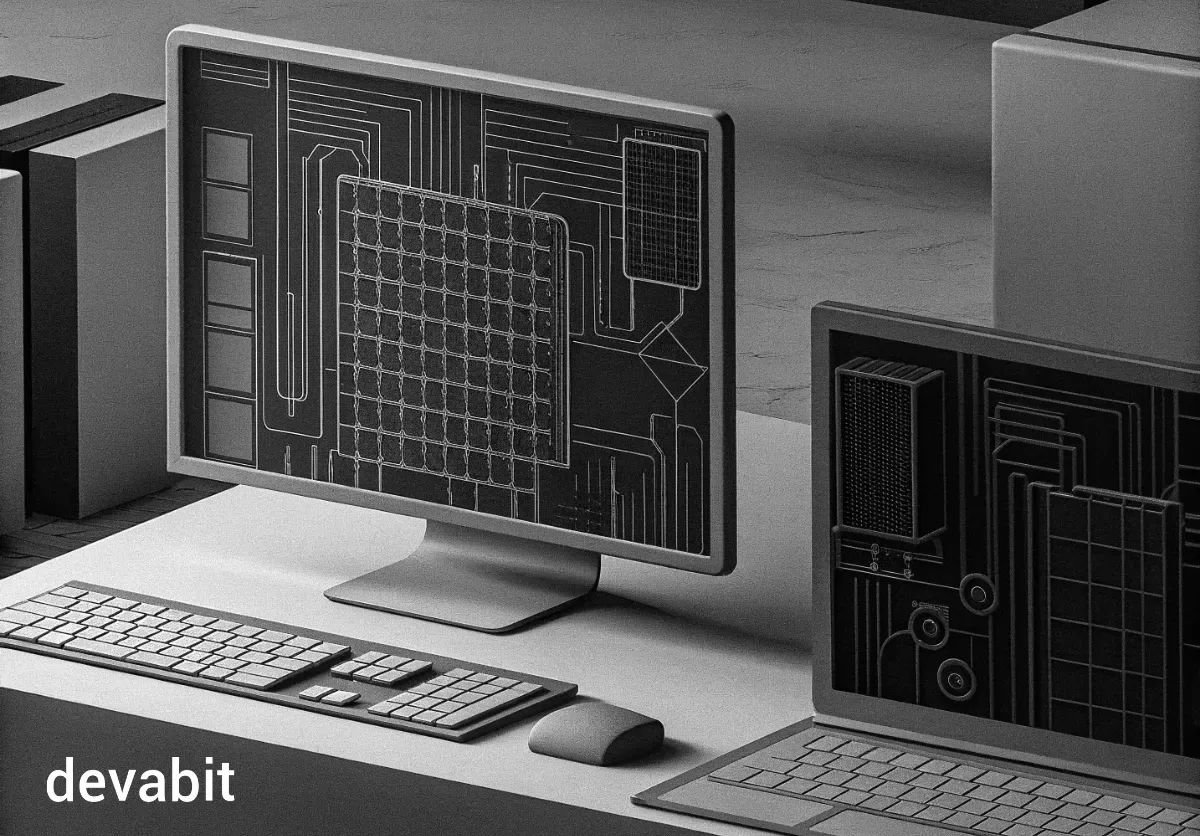
04 / Generative Adversarial Networks (GANs)
Computer Vision Deep Learning algorithms that consist of two networks, a generator and a discriminator, that compete with each other. Able to create new realistic images by learning from real data. Used for image generation, image-to-image translation, and data augmentation for training models.
05 / Vision Transformers (ViT)
One of the newest Computer Vision Deep Learning algorithms that replaces CNNs’ convolution layers with attention mechanisms, letting the model “focus” on essential parts of an image. Highly effective on large datasets and used for classification, object detection, and image segmentation.
Computer Vision vs Machine Learning: Final Thoughts
It is time to draw the bottom line and admit that although Computer Vision vs Machine Learning often overlap, they serve distinct roles within the broader field of artificial intelligence. Machine Learning is the foundation. It provides algorithms that allow systems to learn from data, recognize patterns, and make predictions without explicit hand programming. Computer Vision, on the other hand, is an application area of AI that uses those learning methods to help machines “see” and interpret visual information.
But it is difficult to imagine Computer Vision vs Machine Learning serving top-notch data processing services without each other. And devabit's dynamic pricing & capacity management platform, built from scratch, is a perfect example of next-gen automotive services empowered by both Machine Learning and Computer Vision. If you ever wondered if your business can afford AI integrations or custom software development, our pro consulting services are designed to address even the most complicated challenges in the most straightforward way. Contact Us right here or check our Automotive Software Development services to find the answers to any questions you seek. And remember that winning the race is not about the fastest vehicle but the most ingenious strategy!
Recent Publications
Don't miss out! Click here to stay in touch.
Discover More of Our Expert Guides

Relevant Articles View all categories
View all categories CONNECT WITH US WE’RE READY
TO TALK OPPORTUNITIES
THANK YOU! WE RECEIVED YOUR MESSAGE.
Sorry
something went wrong



